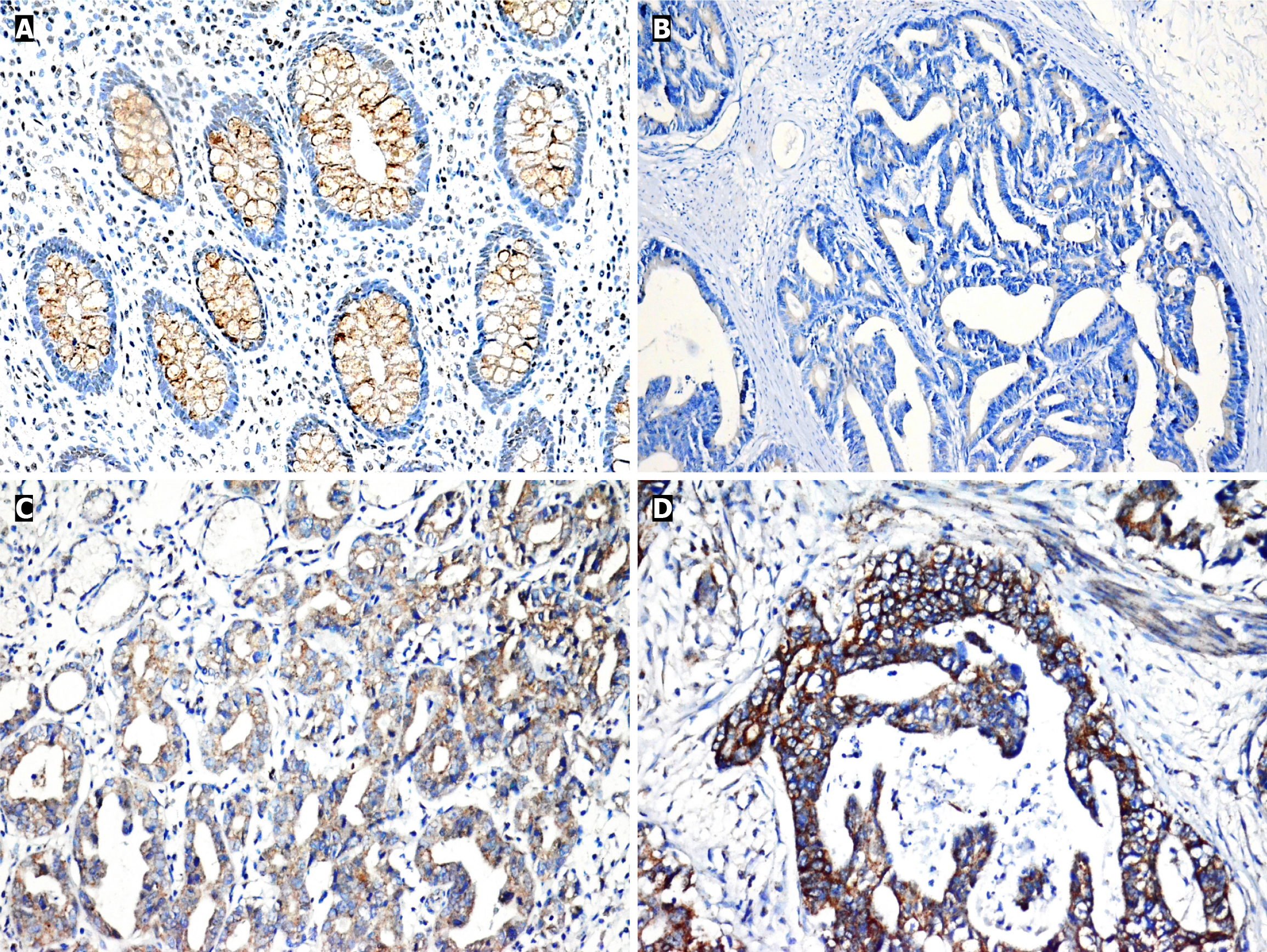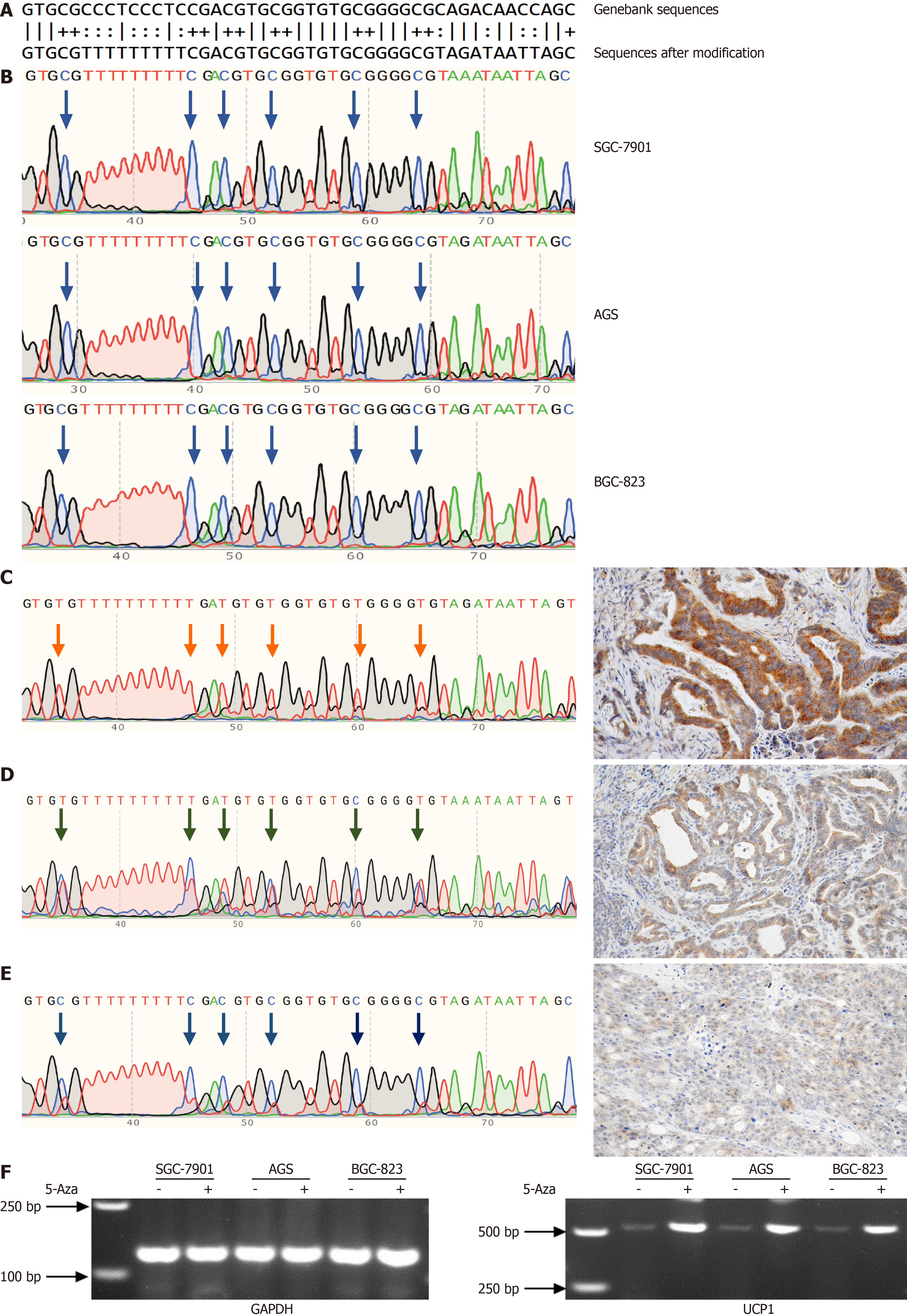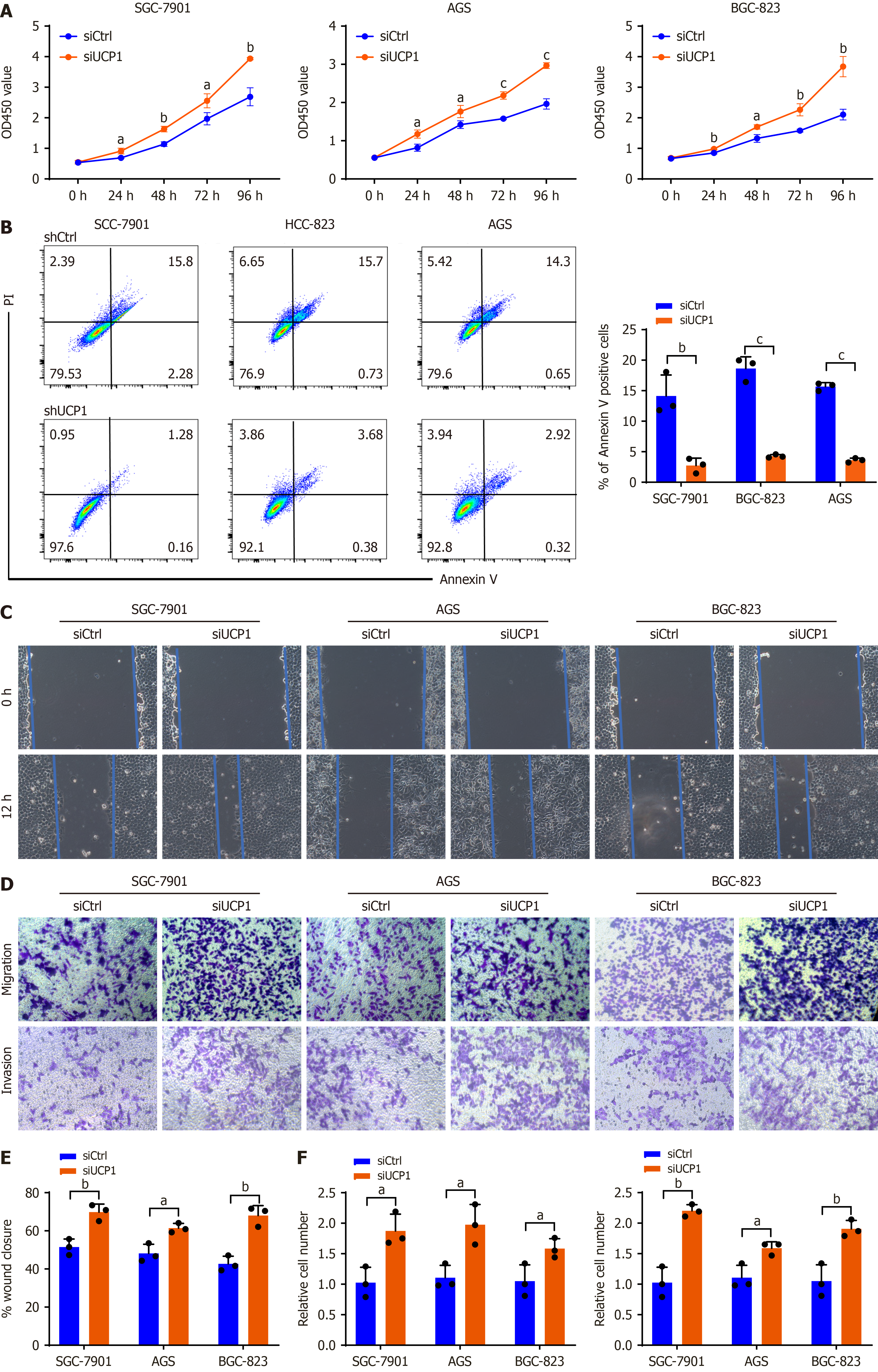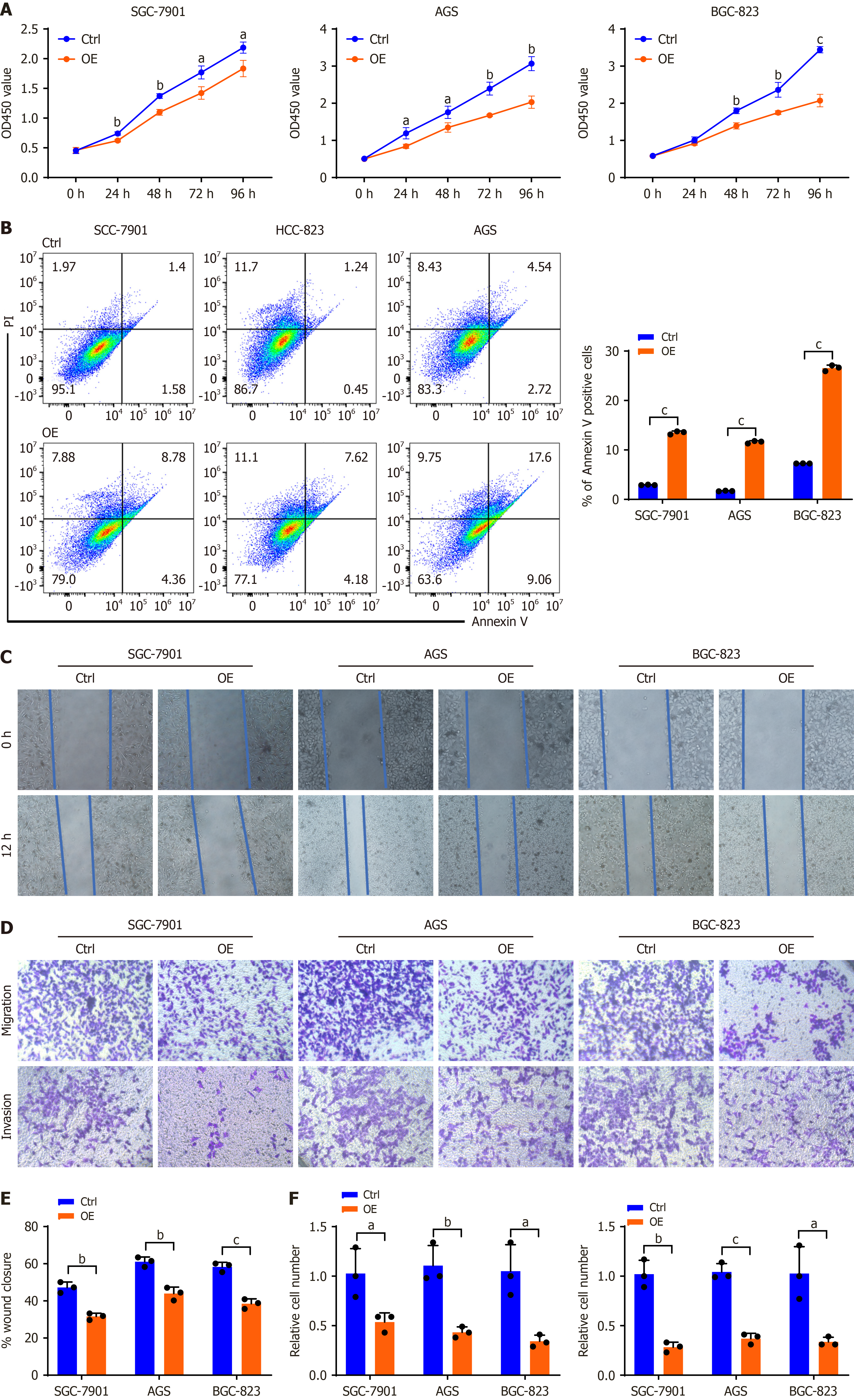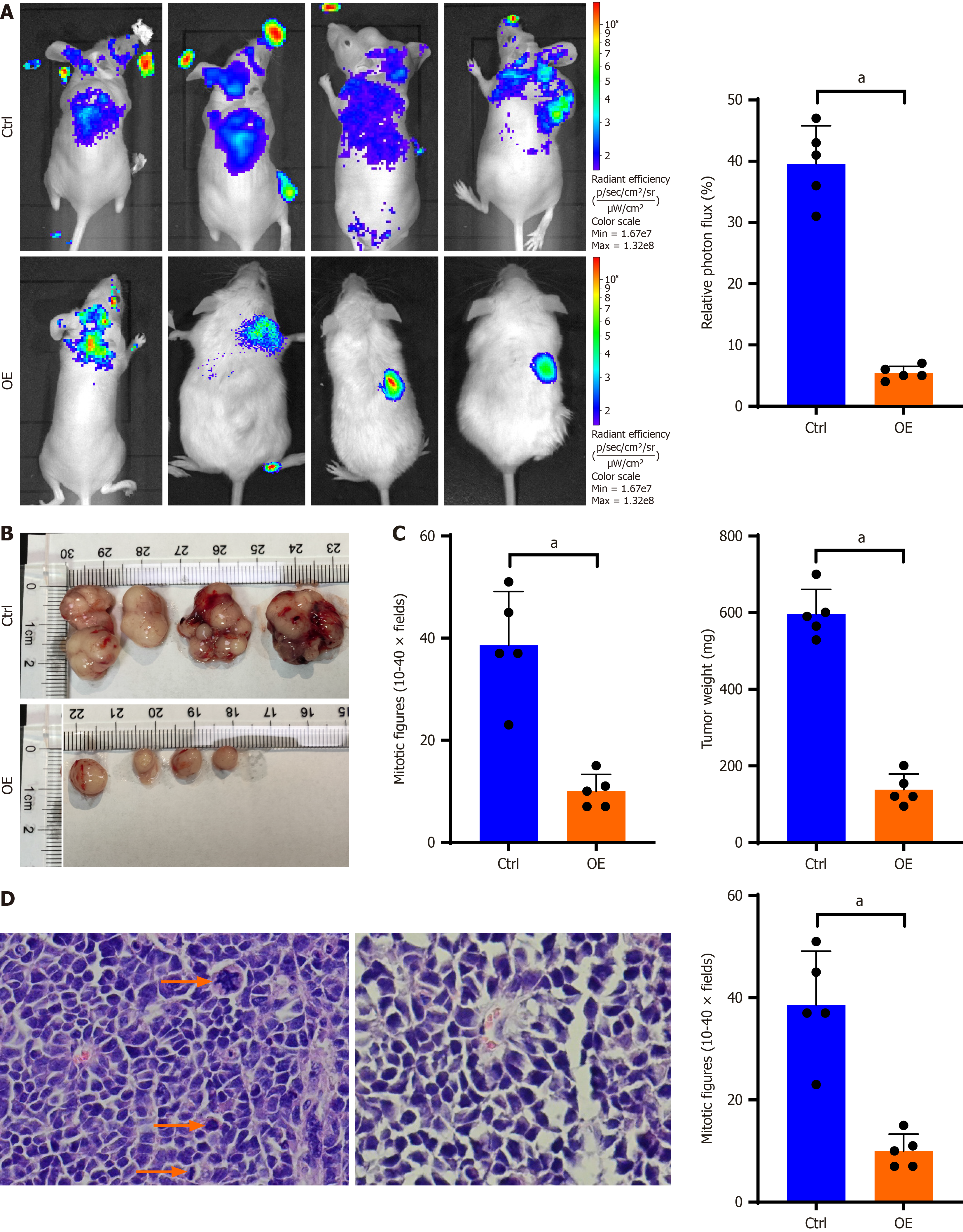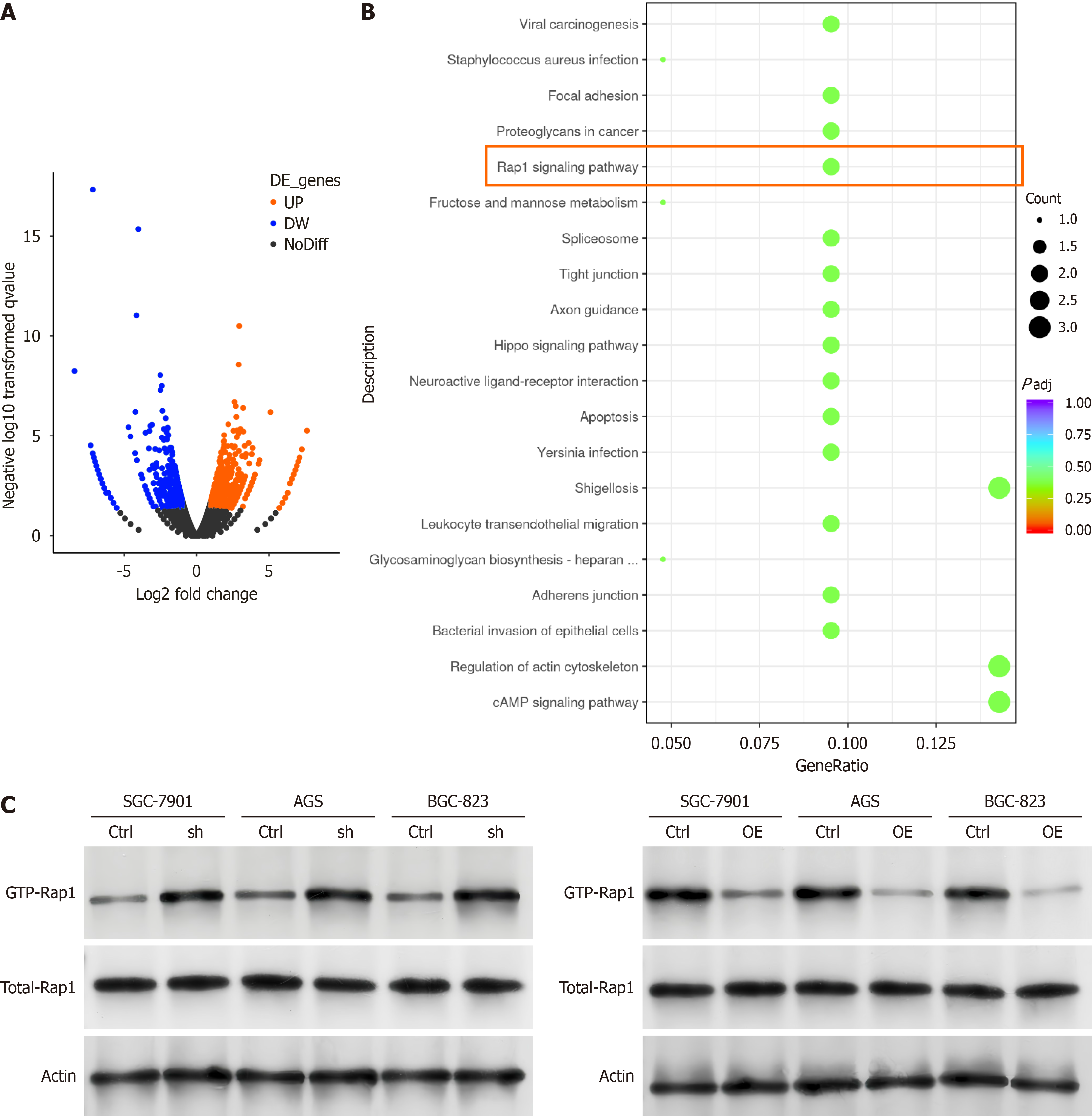Copyright
©The Author(s) 2025.
World J Gastrointest Oncol. Sep 15, 2025; 17(9): 108760
Published online Sep 15, 2025. doi: 10.4251/wjgo.v17.i9.108760
Published online Sep 15, 2025. doi: 10.4251/wjgo.v17.i9.108760
Figure 1 Uncoupling protein 1 was differentially expressed in gastric cancer formalin-fixed paraffin-embedded tissues as revealed by immunohistochemistry staining.
A: Uncoupling protein 1 was positively expressed in normal gastric tissues; B-D: It was negatively (B) expressed in some of gastric cancer (GC) tissues (76 out of 211), and moderately (C) and strongly (D) expressed in some of GC tissues (135 out of 211). Image magnification: 200 ×.
Figure 2 Uncoupling protein 1 expression is silenced by promoter hypermethylation in gastric cancer.
A: The parts of nucleotide sequences of a CpG island in the Uncoupling protein 1 (UCP1) promoter region including seven CG sites. The upper line shows nucleotide sequences in the GenBank, and the lower line shows those after treatment with sodium bisulfite; B: Bisulfite sequencing PCR analysis of UCP1 methylation status in gastric cancer (GC) cell lines. Methylated DNA was detected in all three GC cell lines (methylated C is indicated with a blue arrow). The methylation status of UCP1 in GC tissues was consistent with the UCP1 expression level; C: Unmethylated CG sites (orange arrow) were detected in GC tissue with positive UCP1 expression; D: Both unmethylated and methylated CG sites (green arrow) were detected in GC tissues with moderate expression of UCP1; E: Methylated CG sites (blue arrow) were detected in GC tissues with negative expression of UCP1; F: The expression of UCP1 in all GC cell lines was restored after 5-Aza treatment. UCP1 mRNA expression levels (right) with or without 5-Aza treatment in SGC-7901, AGS, and BGC-823 cells were detected using reverse-transcription PCR, compared with the house-keeping gene GAPDH as internal control (left). UCP1: Uncoupling protein 1.
Figure 3 Knockdown of uncoupling protein 1 promoted gastric cancer cell proliferation, migration, and invasion, and inhibited apoptosis.
A-F: Knockdown of Uncoupling protein 1 with siRNA significantly promoted gastric cancer cell proliferation (A), migration (C and D), and invasion (E and F) compared with negative control groups, and inhibited apoptosis (B). Image magnification: 200 ×. aP < 0.05, bP < 0.01, cP < 0.001. UCP1: Uncoupling protein 1; Ctrl: Control; OE: Overexpression.
Figure 4 Uncoupling protein 1 overexpression.
A-F: Uncoupling protein 1 overexpression significantly inhibited gastric cancer cell proliferation (A), migration (C and E), invasion (D and F), and induced apoptosis (B). Image magnification: 200 ×. aP < 0.05, bP < 0.01, cP < 0.001. Ctrl: Control; OE: Overexpression.
Figure 5 Uncoupling protein 1 overexpression inhibited tumor growth in vivo.
A: In vivo live imaging of mice with a subcutaneously grafted tumor; B: Representative photographs of tumor size in each group; C: Analysis of tumor weight and size in the Uncoupling protein 1 (UCP1)-overexpression and control groups; D: Grafted tumors were subjected to H&E staining. The results indicated that the number of mitotic cells (orange arrow) significantly decreased in UCP1-overexpressed gastric cancer cells compared with control cells (P < 0.001; Image magnification: 400 ×). aP < 0.001. Ctrl: Control; OE: Overexpression.
Figure 6 Uncoupling protein 1 regulates the Rap-1 signaling pathway in gastric cancer cells.
A: Volcano plot for differential gene expression; B: The Kyoto Encyclopedia of Genes and Genomes enrichment of the upregulated genes in the low- Uncoupling protein 1 (UCP1)-expression group; C: Western blot for active and total Rap1 in gastric cancer cells with UCP1 knockdown (left) or overexpression (right). UCP1: Uncoupling protein 1; Ctrl: Control; OE: Overexpression.
- Citation: Chen YJ, Peng C, Wang LW, Chai JX, Wang JD, He QB. Downregulation of uncoupling protein 1 by hypermethylation in gastric cancer activates Rap1 signaling. World J Gastrointest Oncol 2025; 17(9): 108760
- URL: https://www.wjgnet.com/1948-5204/full/v17/i9/108760.htm
- DOI: https://dx.doi.org/10.4251/wjgo.v17.i9.108760













